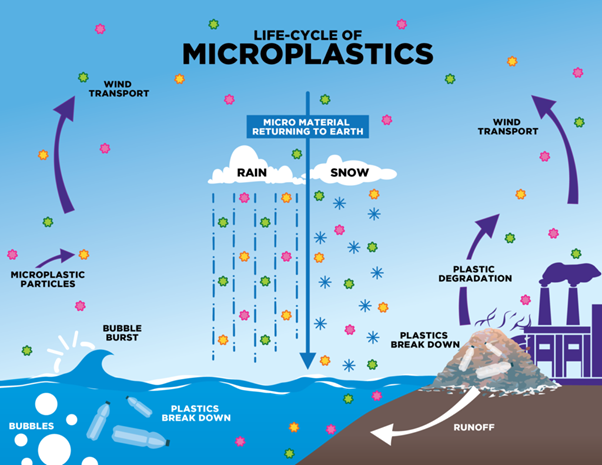

11th June 2022 (6 Topics)
Context
Microplastics have been found in freshly fallen snow in Antarctica for the first time.
About
- Scientists have found microplastics in fresh Antarctic snow for the first time, highlighting the extent of global plastic pollution as even the most remote regions experience contamination.
- Researchers gathered samples of snow from 19 different sites in the Ross Ice Shelf in Antarctica and discovered plastic particles in all of them.
- Most of the particles were from a type of plastic called polyethylene terephthalate, which is found in clothing and water bottles.
- The study found an average of 29 particles per liter of melted snow, higher than marine concentrations previously reported from the surrounding Ross Sea and in Antarctic sea ice.
- Microplastics in the freshly fallen snow of Antarctic would only accelerate the process of melting of ice.
- There is increasing international alarm over volume and omnipresence of plastics pollution, and its impact.
- Infiltrating the most remote and otherwise pristine regions of the planet, microplastics have been discovered inside fish in the deepest recesses of the ocean and locked inside Arctic ice.

What are microplastics?
- Tiny particles of plastic measuring less than 5mm in diameter is termed as microplastic.
- They are one of the major pollutants of land and ocean.
Impacts of microplastic
- On Oceans: Microplastics are source of pollution in oceans they accumulate by breaking into small constituent particles and settle down inside the ocean residing inside for many years without degrading.
- According to the IUCN, at least 8 million tonnes of plastic end up in the oceans every year and make up about 80% of all marine debris from surface waters to deep-sea sediments.
- As perUNEP, in the last four decades, concentrations of these particles appear to have increased significantly in the surface waters of the ocean.
- On marine organisms:Marine organisms such as fish, crabs, prawns consume these minute plastic particles and thus add them to the food chain and leads to bioaccumulation.
- On land: Microplastics are major pollutant of land as they leach in the water bodies such as rivers and lakes through soil.
- Agriculture and plant health is affected.
- On humans:Human health is a matter of concern as plastic is used by us in our day to day routine and unknowingly we are consuming it in the form of microplastics.
- Thus it add to human blood and even can accumulate in organs.
- A study conducted by the World Wide Fund for Nature revealed that an average person consumed 5 grams of plastic.
More Articles


